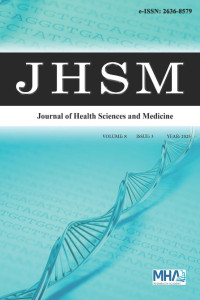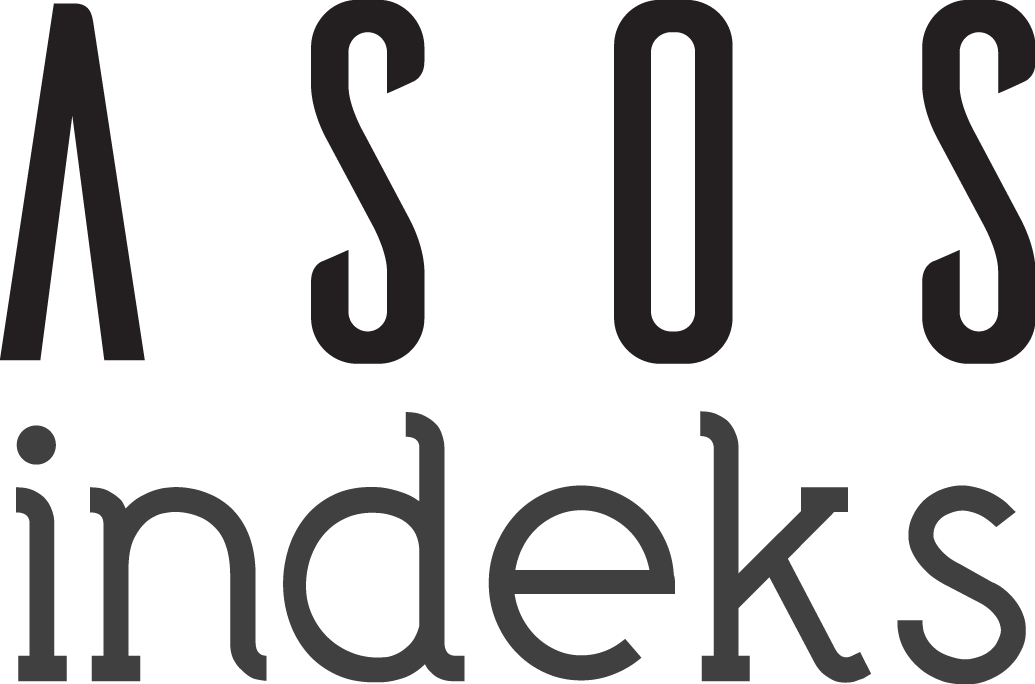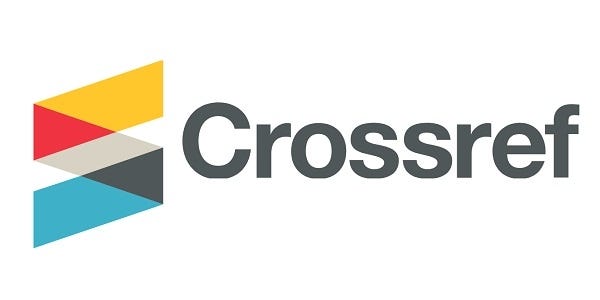Are fat free mass, fat mass and meal frequency associated with malnutrition in institutionalized elderly: a cross-sectional study
Abstract
Aims: Malnutrition is a major concern that increases morbidity and mortality in older adults living in nursing homes. This study aimed to evaluate the nutritional status, body composition, and dietary intake of older adults in nursing homes while identifying the risk factors contributing to malnutrition.
Methods: This is a descriptive and cross-sectional study conducted with 150 older adults from two nursing homes. Malnutrition was assessed using the full version of mini nutritional assessment (MNA). Data were collected by face to face interview and anthropometric measurements and body composition analysis were performed. Statistical analyses included the Mann-Whitney U test, independent sample T test, Chi-square test, Spearman correlation coefficient and logistic regression.
Results: Among participants 81.80% were male. Mean age was 75.13±7.35 years. The prevalence of malnutrition/malnutrition risk was 14.7%. While energy, macronutrient intake, and nutrient adequacy ratio (NAR) were similar between participants with good nutritional status and malnutrition/malnutrition risk, vitamin E intake was significantly higher in older adults with good nutritional status (p=0.009). A higher number of chronic diseases significantly increased the risk of malnutrition (OR=2.083, p=0.038, OR:2.065, p=0.027). However, consuming more meals per day (OR=0.086 p<0.001, OR:0.130, p=0.001), higher fat mass (OR=0.911, p=0.030) and a greater Fat Free Mass Index (OR 0.697, p=0.009) were found to be protective.
Conclusion: Assessing nutritional status, determining food consumption and identifying the factors contributing to malnutrition are crucial for the early prevention and management of malnutrition in older adults. Longitudinal studies with larger sample sizes are needed to develop effective strategies for improving the nutritional well-being of nursing home residents.
Ethical Statement
Study was designed according to the guidelines in Declaration of Helsinki and approved by the Eastern Mediterranean University Scientific Research and Publication Ethics Committee (project number:ETK00-2017/00-32).
Supporting Institution
Conflict of Interest Statement The authors have no conflicts of interest to declare. Financial Disclosure The authors declared that this study has received no financial support
References
- Keshavarz M, Xie K, Bano D, Ehninger D. Aging-what it is and how to measure it. Mech Ageing Dev. 2023;213:111837. doi:10.1016/j.mad.2023. 111837
- World Health Organization (WHO). Aging. Accessed April 18, 2025. https://www.who.int/health-topics/ageing#tab=tab_1
- United Nations, Department of Economic and Social Affairs, Population Division. World Population Prospects: Highlights (ST/ESA/SER.A/423); 2019. Accessed April 18, 2025 https://population.un.org/wpp/assets/Files/WPP2019_Highlights.pdf
- Katsas K, Mamalaki E, Kontogianni MD, et al. Malnutrition in older adults: correlations with social, diet-related, and neuropsychological factors. Nutrition. 2020;71:110640. doi:10.1016/j.nut.2019.110640
- Castaldo A, Zanetti ES, Nobili A, et al. Food intake and prevalence of malnutrition in nursing homes. A multicenter observational study. JGG. 2022;70:223-236.
- Cederholm T, Bosaeus I, Barazzoni R, et al. Diagnostic criteria for malnutrition-an ESPEN consensus statement. Clin Nutr. 2015;34(3):335-340. doi:10.1016/j.clnu.2015.03.001
- Kiesswetter E, Colombo MG, Meisinger C, et al. Malnutrition and related risk factors in older adults from different health-care settings: an enable study. Public Health Nutr. 2020;23(3):446-456. doi:10.1017/S1368 980019002271
- Vandewoude MFJ, van Wijngaarden JP, De Maesschalck L, Luiking YC, Van Gossum A. The prevalence and health burden of malnutrition in Belgian older people in the community or residing in nursing homes: results of the nutri-action II study. Aging Clin Exp Res. 2019;31(2):295-298. doi:10.1007/s40520-018-0979-9
- Madeira T, Peixoto-Plácido C, Sousa-Santos N, et al. Malnutrition among older adults living in Portuguese nursing homes: the PEN-3S study. Public Health Nutr. 2019;22(3):486-497. doi:10.1017/S1368980018002318
- Tomasiewicz A, Polański J, Tański W. Advancing the understanding of malnutrition in the elderly population: current insights and future directions. Nutrients. 2024;16(15):2502. doi:10.3390/nu16152502
- Kujawowicz K, Mirończuk-Chodakowska I, Cyuńczyk M, Witkowska AM. Identifying malnutrition risk in the elderly: a single- and multi-parameter approach. Nutrients. 2024;16(15):2537. doi:10.3390/nu16152 537
- Borkent J, Manders M, Nijhof A, et al. Too low protein and energy intake in nursing home residents. Nutrition. 2023;110:112005. doi:10.1016/j.nut.2023.112005
- Cederholm T, Jensen GL, Correia MITD, et al. GLIM criteria for the diagnosis of malnutrition-a consensus report from the global clinical nutrition community. Clin Nutr. 2019;38(1):1-9. doi:10.1016/j.clnu.2018. 08.002
- Erhardt J. Beslenme Bilgi Sistemi (BeBiS) [Nutrition Information System] 7.1 Full Version. Stuttgart: Üniversite Hohenheim’de geliştirildi. 2010.
- Chun H, Ha JH, Im H, Jung CY, Doo M. Assessment of nutrient adequacy in undergraduate students during the undertaking shipboard internship: using 12-day dietary recall through smartphone photography. BMC Public Health. 2023;23(1):2365. doi:10.1186/s12889-023-17102-8
- Türkiye Beslenme Rehberi TÜBER 2022, T.C. Sağlık Bakanlığı Yayın No: 1031, Ankara 2022.
- Guigoz Y, Vellas B. Nutritional assessment in older adults: MNA® 25 years of a screening tool and a reference standard for care and research; what next? J Nutr Health Aging. 2021;25(4):528-583. doi:10.1007/s12603-021-1601-y
- Kyle UG, Bosaeus I, De Lorenzo AD, et al. Bioelectrical impedance analysis-part I: review of principles and methods. Clin Nutr. 2004;23(5): 1226-1243. doi:10.1016/j.clnu.2004.06.004
- Völgyi E, Tylavsky FA, Lyytikäinen A, Suominen H, Alén M, Cheng S. Assessing body composition with DXA and bioimpedance: effects of obesity, physical activity, and age. Obesity (Silver Spring). 2008;16(3):700-705. doi:10.1038/oby.2007.94
- Eaton-Evans J. Nutritional assessment/Anthropometry. In: Benjamin Caballero, edt. Encyclopedia of Human Nutrition.2nd ed. London: Elsevier Academic Press; 2005. 311–8.
- Sedlmeier AM, Baumeister SE, Weber A, et al. Relation of body fat mass and fat-free mass to total mortality: results from 7 prospective cohort studies. Am J Clin Nutr. 2021;113(3):639-646. doi:10.1093/ajcn/nqaa339
- Mathewson SL, Azevedo PS, Gordon AL, Phillips BE, Greig CA. Overcoming protein-energy malnutrition in older adults in the residential care setting: a narrative review of causes and interventions. Ageing Res Rev. 2021;70:101401. doi:10.1016/j.arr.2021.101401
- Moses JS, John S, Monica SJ, Priyadarshini S. Determinants of malnutrition among elderly women living in institutional care. J Midlife Health. 2023;14(2):139-145. doi:10.4103/jmh.jmh_26_23
- Bozkurt ME, Erdogan T, Catikkas NM, et al. Undernutrition in obese older adults by fat percentage. Aging Clin Exp Res. 2024;36(1):3. doi:10. 1007/s40520-023-02650-1
- Cruz-Jentoft AJ, Bahat G, Bauer J, et al. Sarcopenia: revised European consensus on definition and diagnosis. Age Ageing. 2019;48(1):16-31. doi:10.1093/ageing/afy169
- Hua N, Zhang Y, Tan X, et al. Nutritional status and sarcopenia in nursing home residents: a cross-sectional study. Int J Environ Res Public Health. 2022;19(24):17013. doi:10.3390/ijerph192417013
- Pierik VD, Meskers CGM, Van Ancum JM, et al. High risk of malnutrition is associated with low muscle mass in older hospitalized patients-a prospective cohort study. BMC Geriatr. 2017;17(1):118. doi:10. 1186/s12877-017-0505-5
- López-Teros MT, Vidaña-Espinoza HJ, Esparza-Romero J, Rosas-Carrasco O, Luna-López A, Alemán-Mateo H. Incidence of the risk of malnutrition and excess fat mass, and gait speed as independent associated factors in community-dwelling older adults. Nutrients. 2023; 15(20):4419. doi:10.3390/nu15204419
- Buckinx F, Allepaerts S, Paquot N, et al. Energy and nutrient content of food served and consumed by nursing home residents. J Nutr Health Aging. 2017;21(6):727-732. doi:10.1007/s12603-016-0782-2
- Madeira T, Severo M, Correia D, Lopes C, Gorjão Clara J. Nutritional intake and malnutrition in institutionalised and non-institutionalised older adults. Br J Nutr. 2022;128(5):921-931. doi:10.1017/S000711452100 3925
- Kandapan B, Pradhan I, Pradhan J. Food insecurity and malnutrition among Indian older adults: findings from longitudinal ageing study in India, 2017-18. J Popul Ageing. 2023;16:639-659. doi:10.1007/s12062-022-09378-2
- Şimşek H, Meseri Dalak R, Şahin S, Uçku R. Prevalence of food insecurity and malnutrition, factors related to malnutrition in the elderly: a community-based, cross-sectional study from Turkiye. Eur Geriatr Med. 2013;4(4):226-230. doi:10.1016/j.eurger.2013.06.001
- Bayrak F, Ersoy S, Pala E. Ümraniye Durmuş Tanış Aile Sağlığı Merkezi’ne başvuran 65 yaş üzeri hastalarda malnütrisyon sıklığı ve ilişkili durumlar. Abant Med J. 2021;10(1):93-103. doi:10.47493/abant medj.2021.38
- Çiğiloğlu A, Efendioğlu EM, Öztürk ZA. Ayaktan başvuran geriatrik hastalarda beslenme durumu ile ilişkili faktörler. Namik Kemal Med J. 2022;10(3):276-282. doi:10.4274/nkmj.galenos.2022.24085
- Söderström L, Thors Adolfsson E, Rosenblad A, Frid H, Saletti A, Bergkvist L. Mealtime habits and meal provision are associated with malnutrition among elderly patients admitted to hospital. Clin Nutr. 2018;37(5):1783-1785. doi:10.1016/j.clnu.2018.05.030
- Odencrants S, Blomberg K, Wallin AM. The meal is an activity involving at least two people-experiences of meals by older persons in need of elderly care. Nurs Open. 2019;7(1):265-273. doi:10.1002/nop2.387
- Tadesse AD, Anto TG, Birhanu MY, Agedew E, Yimer B, Abejie AN. Prevalence of undernutrition and its associated factors among older adults using mini nutritional assessment tool in Womberma district, West Gojjam Zone, Amhara Region, North West Ethiopia, 2020. PLoS One. 2023;18(2):e0274557. doi:10.1371/journal.pone.0274557
- Çetinkaya O, Ovayolu Ö. Huzurevinde yaşayan yaşlılarda sarkopeni riski ve malnütrisyon ile etkileyen faktörlerin belirlenmesi. Value Health Sci. 2025;15(1):110-118. doi:10.33631/sabd.1465755
Huzurevlerinde yaşayan yaşlılarda yağsız doku kütlesi, yağ kütlesi ve öğün sıklığı malnütrisyonla ilişkili midir?: kesitsel bir çalışma
Abstract
Malnütrisyon, huzurevlerinde yaşayan yaşlı yetişkinlerde morbidite ve mortaliteyi artıran önemli bir sorundur. Bu çalışma, huzurevlerindeki yaşlı yetişkinlerin beslenme durumunu, vücut kompozisyonunu ve diyete bağlı alımını saptamayı ve malnütrisyona katkıda bulunan risk faktörlerini belirlemeyi amaçlamaktadır.
Yöntem: Bu çalışma, tanımlayıcı ve kesitsel bir çalışma olup, iki farklı huzurevinde, 150 yaşlı birey ile yürütülmüştür. Malnütrisyon, Mini Nutrisyonel Değerlendirme (MNA) aracının uzun hali kullanılarak değerlendirilmiştir. Veriler yüz yüze görüşme yöntemi ile toplanmış, antropometrik ölçümler ve vücut kompozisyonu analizi araştırmacı tarafından yapılmıştır. İstatistiksel analizler için Mann-Whitney U testi, bağımsız örneklem t-testi, ki-kare testi, Spearman korelasyon katsayısı ve lojistik regresyon kullanılmıştır.
Bulgular: Katılımcıların %81,80'i erkek olup, tüm bireylerin ortalama yaşı 75,13 ± 7,35 yıldır. Malnütrisyon/malnütrisyon riski prevalansı %14,7 olarak bulunmuştur. Enerji, makro besin ögesi alımı ve besin ögesi yeterlilik oranı (NAR) açısından gruplar arasında bir farklılık bulunmazken, E vitamini alımının iyi beslenen yaşlı bireylerde anlamlı olarak yüksek olduğu bulunmuştur (p = 0.009). Kronik hastalık sayısındaki artış, malnutrisiyon riskini anlamlı olarak artırırken (OR: 2.083, p=0.038, OR:2.065, p=0.027), günlük öğün sayısının artışı (OR:0.086 p<0.001, OR:0.130, p=0.001), vücut yağ kütlesi (OR:0.911, p=0.030) ve yağsız kütle indeksindeki her bir birimlik artışın (FFMI) (OR 0.697, p=0.009) koruyucu etkisi olduğu görülmüştür..
Sonuç: Yaşlı yetişkinlerde beslenme durumununun değerlendirilmesi, besin tüketiminin saptanması ve malnutrisyona katkıda bulunan faktörlerin belirlenmesi, malnutrisyonun erken dönemde önlenmesi ve yönetimi için çok önemlidir. Huzurevi sakinlerinin beslenme ile ilgili iyilik halini iyileştirmeye yönelik etkili stratejiler geliştirmek için daha geniş örneklem büyüklüklerine sahip uzunlamasına çalışmalara ihtiyaç vardır.
References
- Keshavarz M, Xie K, Bano D, Ehninger D. Aging-what it is and how to measure it. Mech Ageing Dev. 2023;213:111837. doi:10.1016/j.mad.2023. 111837
- World Health Organization (WHO). Aging. Accessed April 18, 2025. https://www.who.int/health-topics/ageing#tab=tab_1
- United Nations, Department of Economic and Social Affairs, Population Division. World Population Prospects: Highlights (ST/ESA/SER.A/423); 2019. Accessed April 18, 2025 https://population.un.org/wpp/assets/Files/WPP2019_Highlights.pdf
- Katsas K, Mamalaki E, Kontogianni MD, et al. Malnutrition in older adults: correlations with social, diet-related, and neuropsychological factors. Nutrition. 2020;71:110640. doi:10.1016/j.nut.2019.110640
- Castaldo A, Zanetti ES, Nobili A, et al. Food intake and prevalence of malnutrition in nursing homes. A multicenter observational study. JGG. 2022;70:223-236.
- Cederholm T, Bosaeus I, Barazzoni R, et al. Diagnostic criteria for malnutrition-an ESPEN consensus statement. Clin Nutr. 2015;34(3):335-340. doi:10.1016/j.clnu.2015.03.001
- Kiesswetter E, Colombo MG, Meisinger C, et al. Malnutrition and related risk factors in older adults from different health-care settings: an enable study. Public Health Nutr. 2020;23(3):446-456. doi:10.1017/S1368 980019002271
- Vandewoude MFJ, van Wijngaarden JP, De Maesschalck L, Luiking YC, Van Gossum A. The prevalence and health burden of malnutrition in Belgian older people in the community or residing in nursing homes: results of the nutri-action II study. Aging Clin Exp Res. 2019;31(2):295-298. doi:10.1007/s40520-018-0979-9
- Madeira T, Peixoto-Plácido C, Sousa-Santos N, et al. Malnutrition among older adults living in Portuguese nursing homes: the PEN-3S study. Public Health Nutr. 2019;22(3):486-497. doi:10.1017/S1368980018002318
- Tomasiewicz A, Polański J, Tański W. Advancing the understanding of malnutrition in the elderly population: current insights and future directions. Nutrients. 2024;16(15):2502. doi:10.3390/nu16152502
- Kujawowicz K, Mirończuk-Chodakowska I, Cyuńczyk M, Witkowska AM. Identifying malnutrition risk in the elderly: a single- and multi-parameter approach. Nutrients. 2024;16(15):2537. doi:10.3390/nu16152 537
- Borkent J, Manders M, Nijhof A, et al. Too low protein and energy intake in nursing home residents. Nutrition. 2023;110:112005. doi:10.1016/j.nut.2023.112005
- Cederholm T, Jensen GL, Correia MITD, et al. GLIM criteria for the diagnosis of malnutrition-a consensus report from the global clinical nutrition community. Clin Nutr. 2019;38(1):1-9. doi:10.1016/j.clnu.2018. 08.002
- Erhardt J. Beslenme Bilgi Sistemi (BeBiS) [Nutrition Information System] 7.1 Full Version. Stuttgart: Üniversite Hohenheim’de geliştirildi. 2010.
- Chun H, Ha JH, Im H, Jung CY, Doo M. Assessment of nutrient adequacy in undergraduate students during the undertaking shipboard internship: using 12-day dietary recall through smartphone photography. BMC Public Health. 2023;23(1):2365. doi:10.1186/s12889-023-17102-8
- Türkiye Beslenme Rehberi TÜBER 2022, T.C. Sağlık Bakanlığı Yayın No: 1031, Ankara 2022.
- Guigoz Y, Vellas B. Nutritional assessment in older adults: MNA® 25 years of a screening tool and a reference standard for care and research; what next? J Nutr Health Aging. 2021;25(4):528-583. doi:10.1007/s12603-021-1601-y
- Kyle UG, Bosaeus I, De Lorenzo AD, et al. Bioelectrical impedance analysis-part I: review of principles and methods. Clin Nutr. 2004;23(5): 1226-1243. doi:10.1016/j.clnu.2004.06.004
- Völgyi E, Tylavsky FA, Lyytikäinen A, Suominen H, Alén M, Cheng S. Assessing body composition with DXA and bioimpedance: effects of obesity, physical activity, and age. Obesity (Silver Spring). 2008;16(3):700-705. doi:10.1038/oby.2007.94
- Eaton-Evans J. Nutritional assessment/Anthropometry. In: Benjamin Caballero, edt. Encyclopedia of Human Nutrition.2nd ed. London: Elsevier Academic Press; 2005. 311–8.
- Sedlmeier AM, Baumeister SE, Weber A, et al. Relation of body fat mass and fat-free mass to total mortality: results from 7 prospective cohort studies. Am J Clin Nutr. 2021;113(3):639-646. doi:10.1093/ajcn/nqaa339
- Mathewson SL, Azevedo PS, Gordon AL, Phillips BE, Greig CA. Overcoming protein-energy malnutrition in older adults in the residential care setting: a narrative review of causes and interventions. Ageing Res Rev. 2021;70:101401. doi:10.1016/j.arr.2021.101401
- Moses JS, John S, Monica SJ, Priyadarshini S. Determinants of malnutrition among elderly women living in institutional care. J Midlife Health. 2023;14(2):139-145. doi:10.4103/jmh.jmh_26_23
- Bozkurt ME, Erdogan T, Catikkas NM, et al. Undernutrition in obese older adults by fat percentage. Aging Clin Exp Res. 2024;36(1):3. doi:10. 1007/s40520-023-02650-1
- Cruz-Jentoft AJ, Bahat G, Bauer J, et al. Sarcopenia: revised European consensus on definition and diagnosis. Age Ageing. 2019;48(1):16-31. doi:10.1093/ageing/afy169
- Hua N, Zhang Y, Tan X, et al. Nutritional status and sarcopenia in nursing home residents: a cross-sectional study. Int J Environ Res Public Health. 2022;19(24):17013. doi:10.3390/ijerph192417013
- Pierik VD, Meskers CGM, Van Ancum JM, et al. High risk of malnutrition is associated with low muscle mass in older hospitalized patients-a prospective cohort study. BMC Geriatr. 2017;17(1):118. doi:10. 1186/s12877-017-0505-5
- López-Teros MT, Vidaña-Espinoza HJ, Esparza-Romero J, Rosas-Carrasco O, Luna-López A, Alemán-Mateo H. Incidence of the risk of malnutrition and excess fat mass, and gait speed as independent associated factors in community-dwelling older adults. Nutrients. 2023; 15(20):4419. doi:10.3390/nu15204419
- Buckinx F, Allepaerts S, Paquot N, et al. Energy and nutrient content of food served and consumed by nursing home residents. J Nutr Health Aging. 2017;21(6):727-732. doi:10.1007/s12603-016-0782-2
- Madeira T, Severo M, Correia D, Lopes C, Gorjão Clara J. Nutritional intake and malnutrition in institutionalised and non-institutionalised older adults. Br J Nutr. 2022;128(5):921-931. doi:10.1017/S000711452100 3925
- Kandapan B, Pradhan I, Pradhan J. Food insecurity and malnutrition among Indian older adults: findings from longitudinal ageing study in India, 2017-18. J Popul Ageing. 2023;16:639-659. doi:10.1007/s12062-022-09378-2
- Şimşek H, Meseri Dalak R, Şahin S, Uçku R. Prevalence of food insecurity and malnutrition, factors related to malnutrition in the elderly: a community-based, cross-sectional study from Turkiye. Eur Geriatr Med. 2013;4(4):226-230. doi:10.1016/j.eurger.2013.06.001
- Bayrak F, Ersoy S, Pala E. Ümraniye Durmuş Tanış Aile Sağlığı Merkezi’ne başvuran 65 yaş üzeri hastalarda malnütrisyon sıklığı ve ilişkili durumlar. Abant Med J. 2021;10(1):93-103. doi:10.47493/abant medj.2021.38
- Çiğiloğlu A, Efendioğlu EM, Öztürk ZA. Ayaktan başvuran geriatrik hastalarda beslenme durumu ile ilişkili faktörler. Namik Kemal Med J. 2022;10(3):276-282. doi:10.4274/nkmj.galenos.2022.24085
- Söderström L, Thors Adolfsson E, Rosenblad A, Frid H, Saletti A, Bergkvist L. Mealtime habits and meal provision are associated with malnutrition among elderly patients admitted to hospital. Clin Nutr. 2018;37(5):1783-1785. doi:10.1016/j.clnu.2018.05.030
- Odencrants S, Blomberg K, Wallin AM. The meal is an activity involving at least two people-experiences of meals by older persons in need of elderly care. Nurs Open. 2019;7(1):265-273. doi:10.1002/nop2.387
- Tadesse AD, Anto TG, Birhanu MY, Agedew E, Yimer B, Abejie AN. Prevalence of undernutrition and its associated factors among older adults using mini nutritional assessment tool in Womberma district, West Gojjam Zone, Amhara Region, North West Ethiopia, 2020. PLoS One. 2023;18(2):e0274557. doi:10.1371/journal.pone.0274557
- Çetinkaya O, Ovayolu Ö. Huzurevinde yaşayan yaşlılarda sarkopeni riski ve malnütrisyon ile etkileyen faktörlerin belirlenmesi. Value Health Sci. 2025;15(1):110-118. doi:10.33631/sabd.1465755
Details
| Primary Language | English |
|---|---|
| Subjects | Clinical Nutrition, Geriatrics and Gerontology |
| Journal Section | Original Article |
| Authors | |
| Publication Date | May 30, 2025 |
| Submission Date | April 22, 2025 |
| Acceptance Date | May 15, 2025 |
| Published in Issue | Year 2025 Volume: 8 Issue: 3 |
Interuniversity Board (UAK) Equivalency: Article published in Ulakbim TR Index journal [10 POINTS], and Article published in other (excuding 1a, b, c) international indexed journal (1d) [5 POINTS].
The Directories (indexes) and Platforms we are included in are at the bottom of the page.
Note: Our journal is not WOS indexed and therefore is not classified as Q.
You can download Council of Higher Education (CoHG) [Yüksek Öğretim Kurumu (YÖK)] Criteria) decisions about predatory/questionable journals and the author's clarification text and journal charge policy from your browser. https://dergipark.org.tr/tr/journal/2316/file/4905/show
The indexes of the journal are ULAKBİM TR Dizin, Index Copernicus, ICI World of Journals, DOAJ, Directory of Research Journals Indexing (DRJI), General Impact Factor, ASOS Index, WorldCat (OCLC), MIAR, EuroPub, OpenAIRE, Türkiye Citation Index, Türk Medline Index, InfoBase Index, Scilit, etc.
The platforms of the journal are Google Scholar, CrossRef (DOI), ResearchBib, Open Access, COPE, ICMJE, NCBI, ORCID, Creative Commons, etc.
| ||
|
Our Journal using the DergiPark system indexed are;
Ulakbim TR Dizin, Index Copernicus, ICI World of Journals, Directory of Research Journals Indexing (DRJI), General Impact Factor, ASOS Index, OpenAIRE, MIAR, EuroPub, WorldCat (OCLC), DOAJ, Türkiye Citation Index, Türk Medline Index, InfoBase Index
Our Journal using the DergiPark system platforms are;
Journal articles are evaluated as "Double-Blind Peer Review".
Our journal has adopted the Open Access Policy and articles in JHSM are Open Access and fully comply with Open Access instructions. All articles in the system can be accessed and read without a journal user. https//dergipark.org.tr/tr/pub/jhsm/page/9535
Journal charge policy https://dergipark.org.tr/tr/pub/jhsm/page/10912
Our journal has been indexed in DOAJ as of May 18, 2020.
Our journal has been indexed in TR-Dizin as of March 12, 2021.
Articles published in the Journal of Health Sciences and Medicine have open access and are licensed under the Creative Commons CC BY-NC-ND 4.0 International License.















